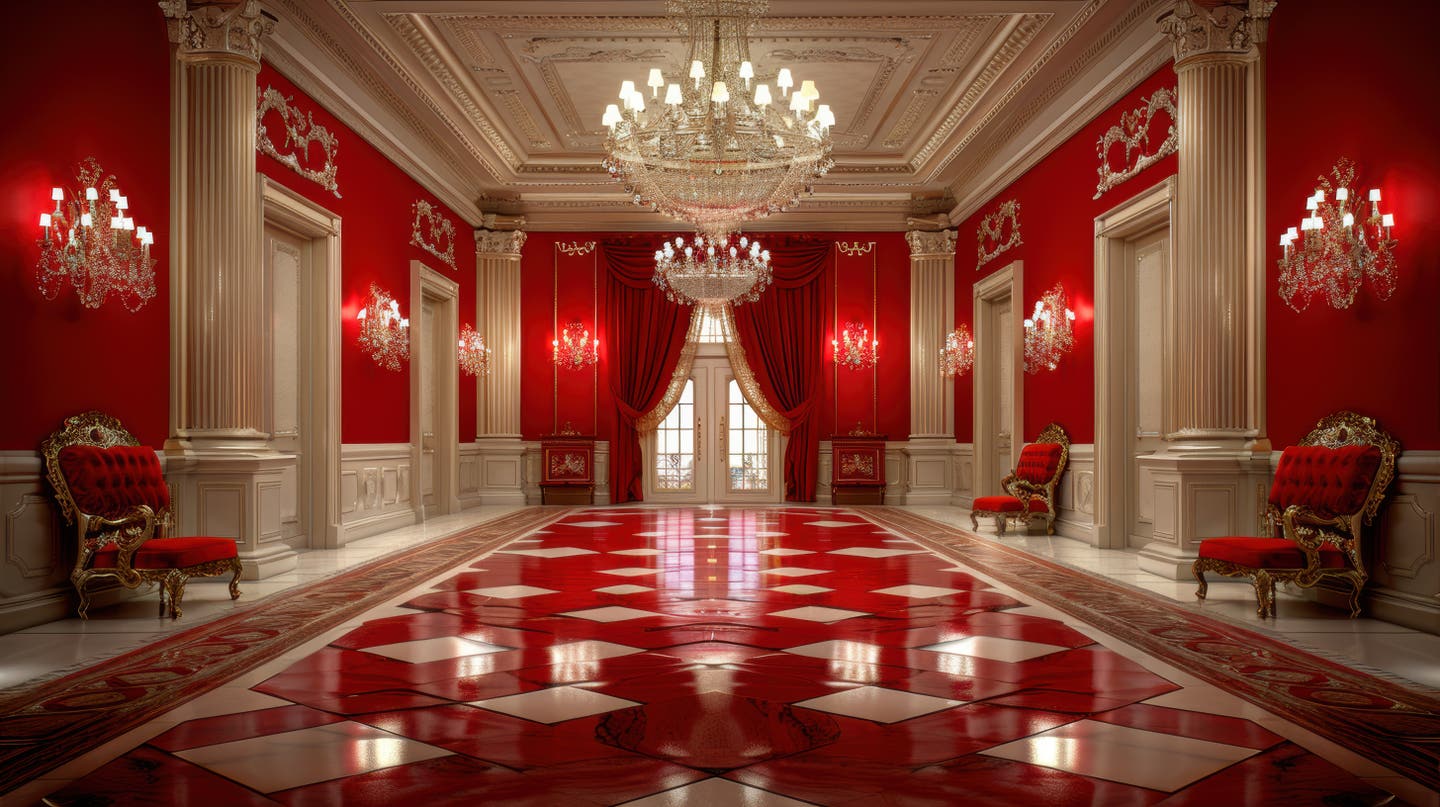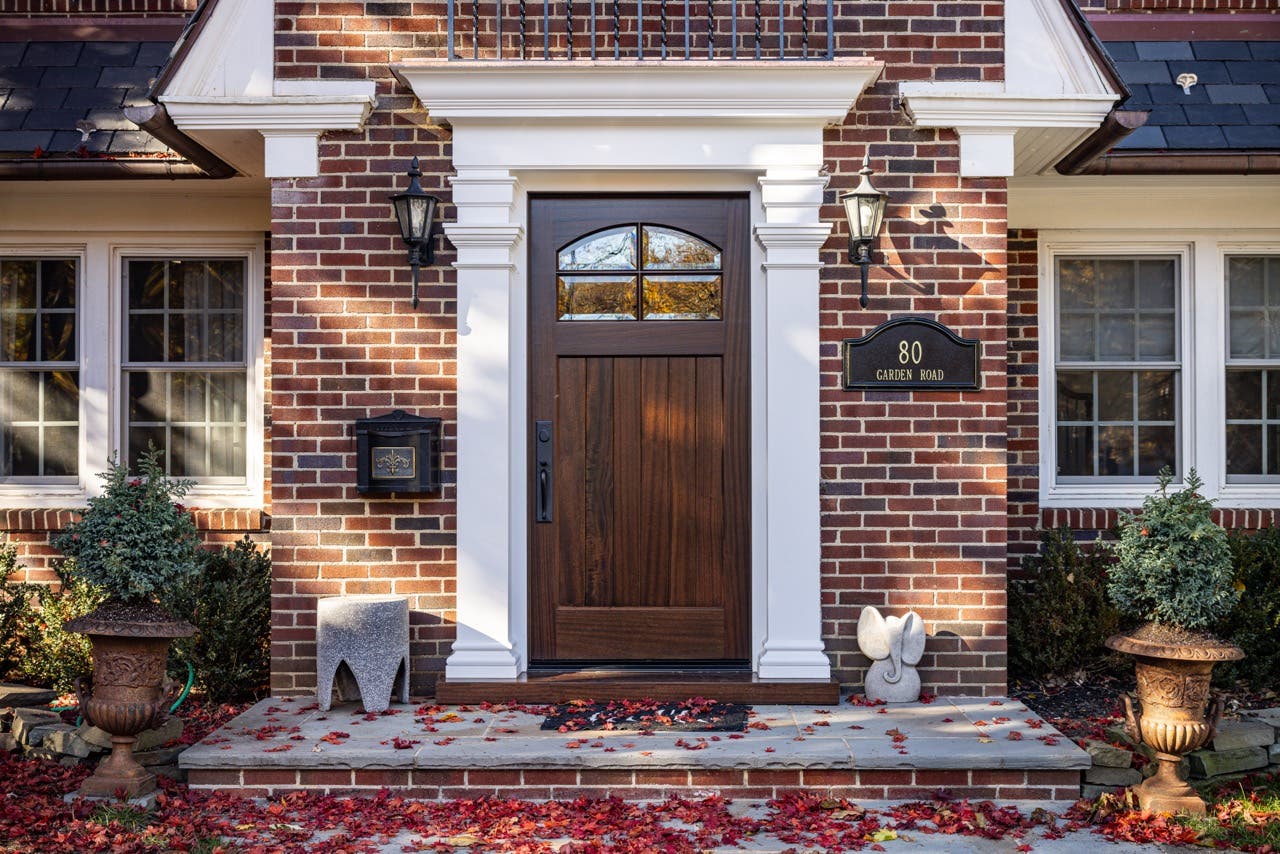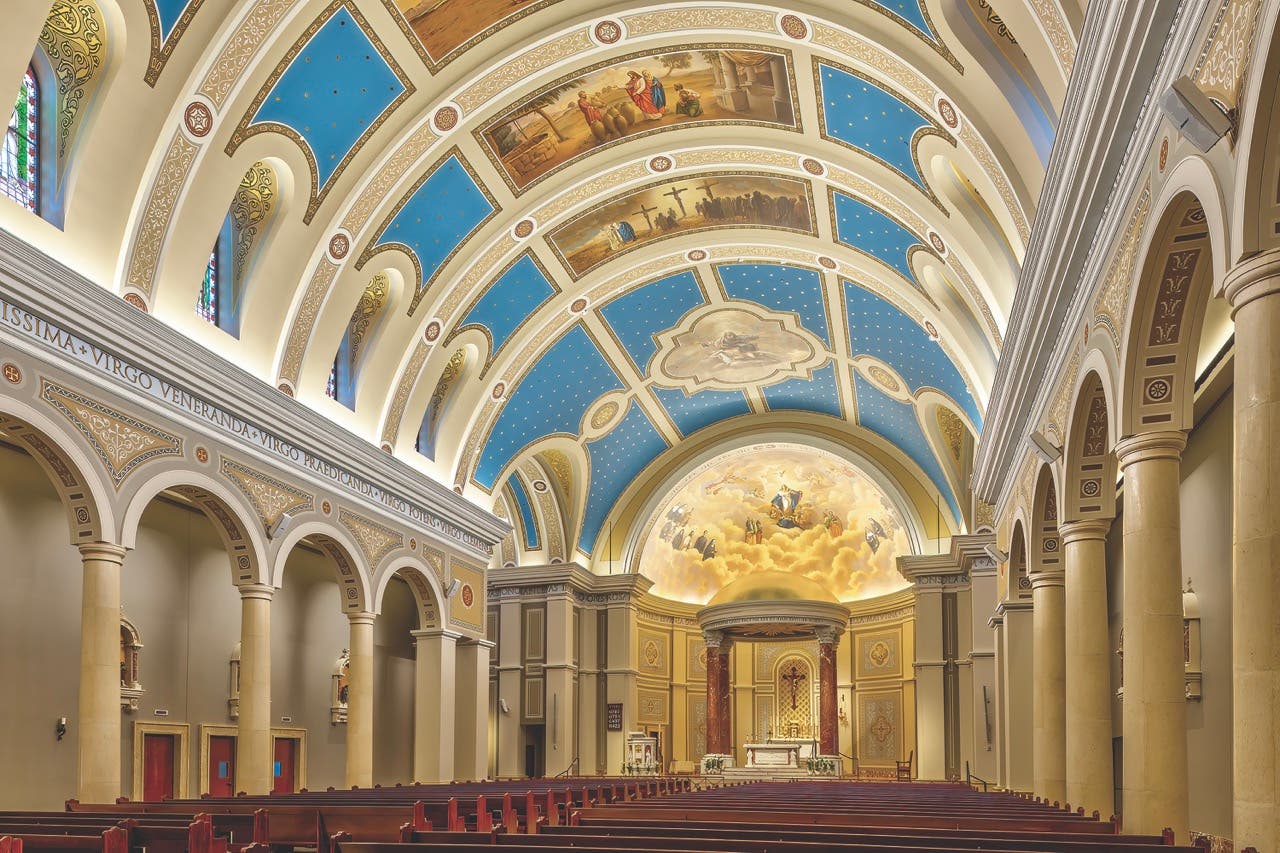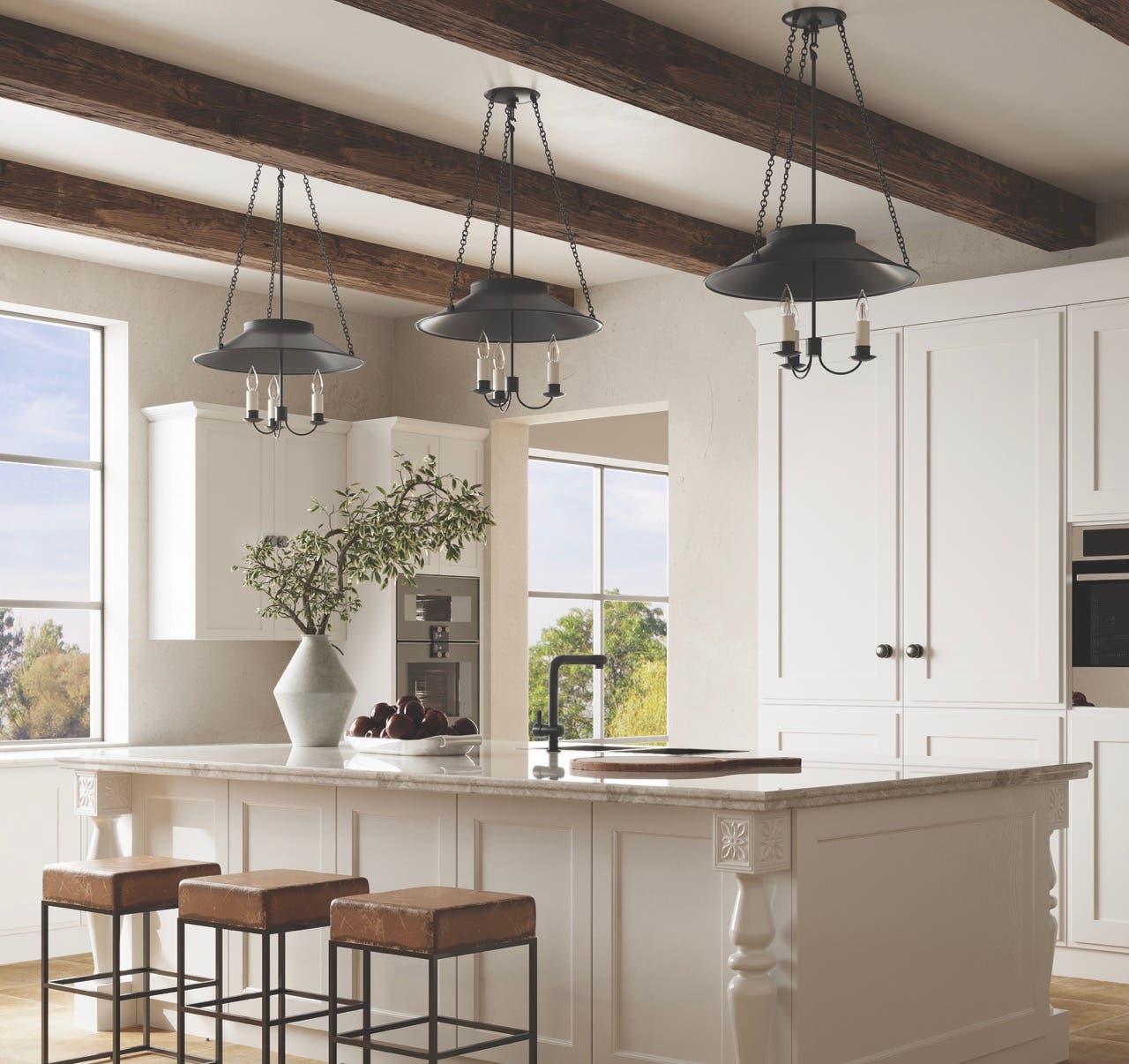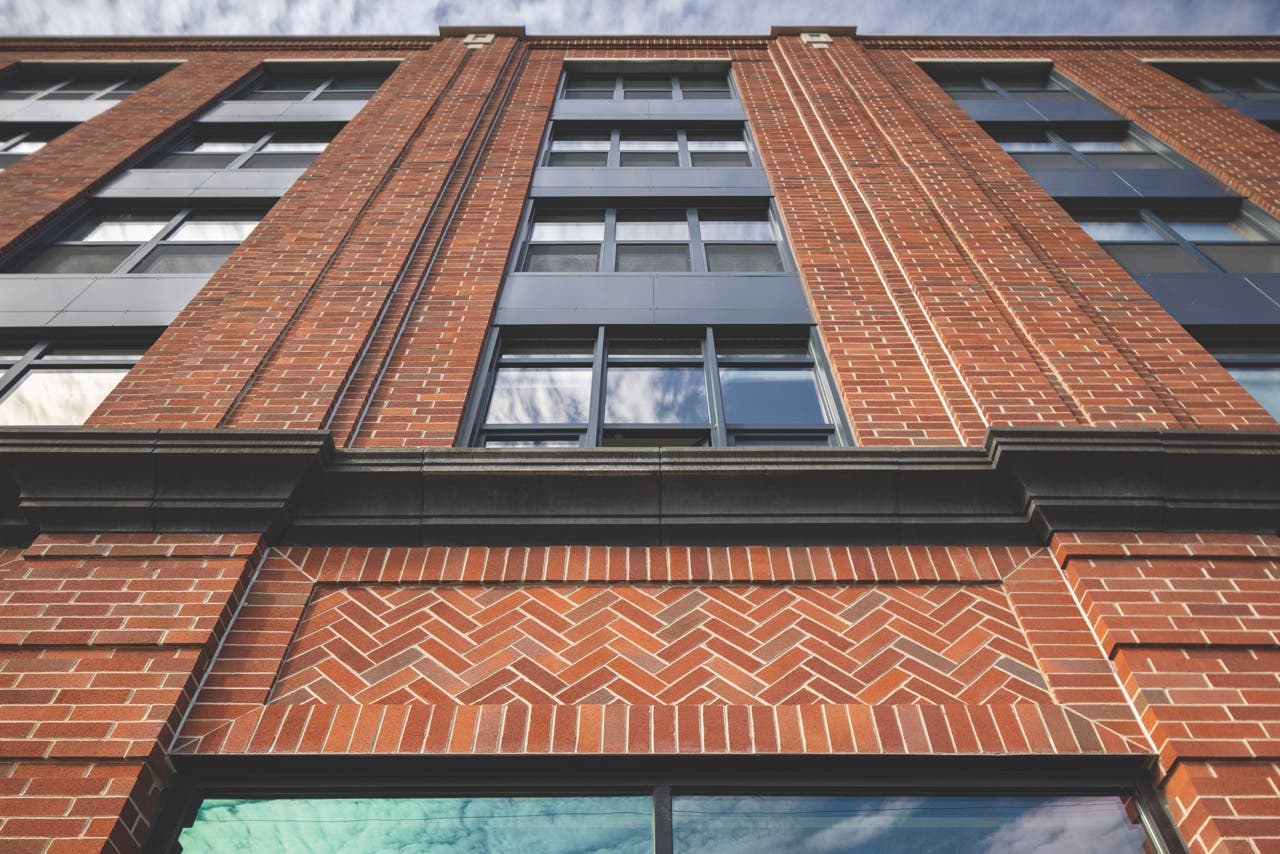
Product Reports
Cast Stone
Cast stone, the legendary lookalike for natural cut stone, has never been surpassed for simulating shaped masonry building elements and landscape features of all kinds. “In one form or another, cast stone has been around for hundreds of years,” explains David West, president of Haddonstone USA in Pueblo, Colorado, “but typically the material is granular limestone, 1 millimeter to 2 millimeter in size, white Portland cement, and silica sand. Small amounts of water are added so that you get a mix about the consistency of beach sand when you make a sand castle.” At Haddonstone, the mix is hand-compacted into a mold during the day, left in the mold overnight, then de-molded before proceeding to a curing process. “Curing uses a fine vapor mist that encourages the hardening of the cement, giving it a conventional, seven-day strength overnight.”
When so combined, the ingredients adopt the appearance of natural limestone, with a surface texture very similar to quarried stone, yet advantages in time and efficiency. “If somebody is tooling a quarried stone, and they need 50 pieces, they’ve got to cut, sculpt, or carve, them out individually,” says West. “Whereas if we were to produce one mold, we can cast 50 pieces in a significantly shorter space of time; it’s more cost-effective.”
Depending upon the type of limestone used, cast stone can range in color from gray to a beige hue, but products can also be custom-colored by adding dyes to the mix. “This comes into play a lot in renovation and restoration projects, certainly in churches, for instance,” says West, “because color-matching would be able to achieve new units comparable to existing materials on the site.” First, the contractor would send the manufacturer an actual sample piece of the existing stone. “Next, we would make up five or six small mixes, adding various degrees of dye to each mix in order to obtain a suitable color match. We’d keep a record of the recipe, and the amount of dye that’s in each particular mix. Then we’d send our five or six mixes back out to the site for the contractor or architect to choose which looks best.”
West’s company typically relies on two types of molds. “One type is timber (wood) that we use with more simplistic profiles such as plinth courses, pier caps, and so on that have a lot of relatively flat surfaces. The other type is a rubber-and-fiberglass shell mold, which we employ to achieve a high level of detail.” The rubber is the actual mold, and flexible enough that it can be pulled away from the detail without breaking any of it off.
Cast stone has long been the actual source of “turned” elements such as balustrades and columns, but it also appears in the ornamental trimwork like belt courses, spandrels, and bandings that accent brick or stone construction in traditional architecture. “We do numerous types of windows and door surrounds,” says West, “everything from residential projects, which may be relatively simple, 4-inch by 4-inch sections around the window, to larger sections, such as 10-inch by 10-inch for bigger buildings.” He says if the exterior is masonry, such as brick or stone, typically these are solid sections, “but we also have thin-wall material, about 1-inch to 1½-inch thick, that can be screwed to a wood-frame structure, and works for retrofits as well as new construction.” They have everything for entranceways too—ashlar blocks, quoins, arches—for commercial structures to religious buildings.
Says West, “In our process, any sort of crisp edges or details—for instance, the chamfers on quoins—are built into the mold, so basically, the surface texture remains completely uniform.” Cutting cast stone can reveal a varied appearance as well as leave saw marks. “You can certainly cut cast stone. For instance, when you install a plinth course, we would probably supply units in nominal lengths of 36-inches or so and then contractors would cut those lengths to suit on site. But what they’re cutting is the end section, just the joints, so it is not visible on the surface.”
Cornices
For cornices, West says there are two or three ways to approach an installation. “You could have a solid unit with a cornice that would need to be mechanically fixed back to the structure.” Typically that would be dictated by whether it’s a masonry façade or another type of construction. A second option is to have the cornice unit L-shaped. “If it has to span a particular opening size, the cast reinforced concrete poured behind the material would provide that structural base. Effectively it becomes sort of a decorative cornice.” Alternatively, there are thin-wall versions available from his company that can be screwed to the façade or retrofitted.
Any discussion of religious buildings and cast stone inevitably touches on traceries, the curvilinear openwork of Gothic windows. “Historically they were carved out of stone, but it’s certainly something that can be done with the nature of cast stone.” In fact, the manufacture of cast stone tracery windows was a lively industry around 1900. As West describes, the general process relies on a second type of mix. “The semi-dry mix, explained earlier, is really more for ornamental and self-supporting structures. A second type goes into the realms of a wet-mix or a wet-pour mix that enables you to lay reinforcement in the molds while the mix is poured over.” Typically though this reinforced cast stone is only self-supporting for the span of the window itself—not supporting any structure above. “The beauty of a tracery is where a rubber and fiberglass mold comes into play in order to be able to create the complex curves.”
Adds West, “We’ve got our standard range of products, obviously, but we do everything to facilitate custom projects.” First they take an architect’s design and then produce shop drawings for approval. “After that we would make models, if required, and all the molds in-house. We have everything here, under one roof.”
Gordon H. Bock is an architectural historian, instructor with the National Preservation Institute, and speaker through www.gordonbock.com.



